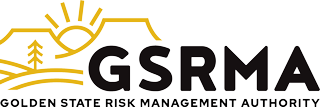Generally speaking, health insurance plans in this country have so far sailed through the COVID-19 crisis relatively unscathed. We have seen a significant decline in claims utilization which will help drive rates down in the near future. However, as we see gradual reopening of our communities, it is predicted that non-emergency and elective surgical claims will increase sharply thus driving utilization up and impacting rates. Health plan participants can help minimize this utilization wave. In my years working in the health insurance field, I have noticed that many individuals do not realize they are entitled to a second opinion on prospective surgical procedures. In some cases, for example, some have been able to bypass surgery by seeking out physical therapy treatment instead.
Another way to drive down utilization costs is through telehealth. With the uncertainty of COVID-19 and reducing the spread with stay at home orders, many carriers have added the benefit of online and telephonic health care. Blue Shield has partnered with TelaDoc while Anthem has partnered with Live Health Online. These programs can be utilized in the privacy of one’s own home saving them both time and money. The user registers online, request a call appointment, pays their plan copay if appropriate, and the call is initiated. The telehealth doctor may request a video chat so they can see the patient for diagnosis reasons. If medication is needed, the doctor can prescribe an RX and have it sent to the individual’s pharmacy of choice. While it is uncertain to what extent care will remain virtual beyond the pandemic, telehealth has gained steady popularity. Its popularity will likely continue well after the pandemic subsides.
It is important to note that many health insurance companies are waiving COVID -19 testing and treatment co-pays. Affected individuals should reach out to their carrier for details of any special waivers available to them. Taking advantage of any available preventative services can result in both the covered individual and their health plan saving money.
Districts that belong to a public-sector health benefits pool, such as the health coverage offered through GSRMA, benefit from belonging to a large group of other public entities. Not only are these pools not-for-profit and formed for the benefit of their members, they are of such significant size that they have the ability to aggressively negotiate pricing with vendors and business partners. In addition, individual members may actually participate in the governance and direction of the pool. Insurance pools are member driven and every member’s input matters.
For more information contact GSRMA’s Employee Benefits Specialist, Naomi Whatley at Employee Benefits.

